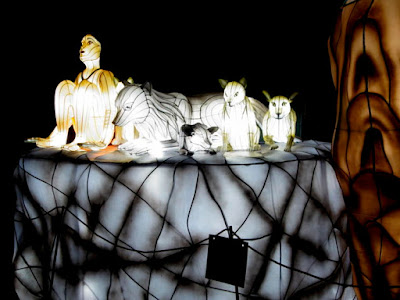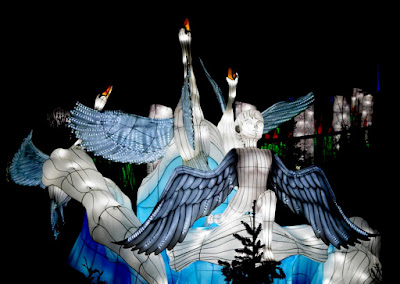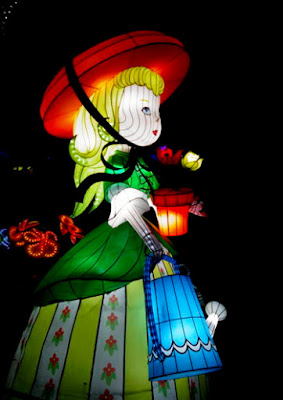I have earlier blogged about the epic Irish language publishing company Sáirséal agus Dill and my brief connections with them through school and otherwise.
The publishing company was the child of Bríghid and Seán Ó hÉigeartaigh and now the couple's own children, Cian and Aoileann, have written a magnificent book documenting the tumultuous life of the company and the dedication of its founders in keeping it afloat in a sea of adversity.
Coincidentally, I had already blogged on Bríghid's father, Séamas Ó Maoileoin, in the context of his internment in Frongoch following the Easter Rising.
I will return to the book in a later post, but my interest here is in Albert Folens and his interaction with the company.
Albert was my French teacher in Coláiste Mhuire in the 1950s. It was around this time that he he was organising publication of his French course Nuachúrsa Fraincise with the publishers. So I got a copy of Cian & Aoileann's book to check this out and see what more I could learn about this extraordinary man.
By this time he had already been doing up Roneod notes to help students swot up for their State examinations. But publishing a real live book, and with such an exacting publisher, was another matter entirely.
The company's insistence on the highest standards often led to delays in publication of textbooks.
Albert Folens, a young Belgian of Flemish origins, was teaching French through the direct method in Coláiste Mhuire in Parnell Square, when he offered Nuachúrsa Fraincise to Sáirséal agus Dill in 1953. As far as Folens was concerned, all that needed to be done was to print his existing lessons and get someone to supplement them with an Irish vocabulary and notes. He figured you could have a book out within the month.
But Seán Ó hÉigeartaigh insisted that the job be done properly. The print would have to be carefully set, ensuring that not a single fada or accent grave was left out and that the Irish translation faithfully reflected the French text, so that, for example, taverne would not be translated as coileán just because an Irish speaker heard pup when a French speaker was trying to get his tongue around pub.
So, Nuachúrsa Fraincise didn't hit the shelves till 1955. It was in great demand and had to be reprinted that summer and many times afterwards. But Folens was not satisfied.
Nuachúrsa Fraincise II was also a success but Folens refused to give any further books to Sáirséal agus Dill. He set up his own company focusing on publishing cramming notes for State exams, and he got rich.
Was Folens right? We leave it to the reader to make up their own mind - but they should first check out a copy of Nuachúrsa Fraincise.
pp 164/5
We should not forget Donncha's role in this. He handled the Irish language content of both volumes of Nuachúrsa Fraincise, a not insubstantial task.
He was to further partner with Folens when he translated Folens' thoughts and words into Irish for the political apologia Aiséirí Flóndrais which Folens self-published in 1958.
I remember this book well from school. The mundane, but linguistically mysterious, adventures of Jean Noiret.
In a letter to the Department of Education, after the publication of Nuachúrsa Fraincise, Seán sought to set up a permanent scheme for financing textbooks, involving a repayable grant of £500 and a share of the profits of individual books, with the Department.
It is likely that the sum of £500 which Seán mentioned in his letter to the Deparment was based on the cost of Nuachúrsa Fraincise I, which book had to be sent to England for printing as no Irish printer was prepared to produce it on time at a reasonable price.
Nevertheless this was a low price: at £326, the cost of the typesetting with a further £300 for printing and binding the first 1,500 copies. And there was more, author's, editor's, artist's fees, the cost of the cover block and typing costs (Donnchadh Ó Céilleachair returned his author's fees to Sáirséal agus Dill.)
In 1956 it cost over £1,037 to print 5,000 copies of Nuachúrsa Fraincise II and bind 2,000 of them, and a further £60 was spent on blocks and artwork.
Ó hÉigeartaigh understood the civil service mindset: he knew there was no point in looking for more than some official in the Department of Education might consider reasonable - and they had no proper yardstick to judge this.
pp 103/4
It is mentioned above that Albert set up his own company and I have blogged elsewhere on this.
Sadly, two decades later, he ended up suing Sáirséal agus Dill over a claimed breach of contract which should really have been laid at the door of the Department of Education.
As far as I can make out, the Department of Education had a policy of supporting the publication of anthologies containing the full syllabus rather than simply those specific items which were on the course in any one year. They achieved this by only revealing what was on a specific year(s) course at the beginning of the relevant school year when it would be too late for publishers to come up with the more limited versions.
There was increasing pressure from parents on the Department for earlier release of the course titles precisely so that mini-volumes specific to the year could be produced as this would allow the students to cut down the weight of their already over loaded schoolbags.
The Department continued to resist this pressure and, for example, in 1975 Folens & Co embarked on the printing of the full syllabus for the Inter Certificate Irish poetry. Among the poems concerned were three to which Sáirséal agus Dill held the copyright.
Folens understood, on the basis of a 1972 agreement with Sáirséal agus Dill, that the copyright would be released only for the full syllabus volume.
This was not a problem as long as the Department refused to release year-specific titles before the start of the school year.
However, in 1975 the Department acceded to parental pressure and released the titles early.
This put Sáirséal agus Dill in a dilemma. If they didn't release their copyright to publishers who were now preparing mini-volumes specific to the year, then these poems would simply be excluded and parents would have to find them somewhere else, such as in the full volume being prepared by Folens.
If Sáirséal agus Dill released the titles then Folens' sales of the full volume would be undermined by sales of the mini-volumes. In the event, the company yielded to pressure and released the titles. Folens lost money and sued the company.
The case did not come to court until 1980. Bríghid thought she had a good case as the problem had been caused by a change of mind on the part of the Department. She was due to be called as a witness and her grilling by Folens' lawyers was expected to last a whole day or more. The problem was that her health was deteriorating, she was under doctor's orders, and her family felt she would not survive the strain.
So, after the first day of the case, when Folens offered to settle on what the company considered reasonable terms this was accepted.
The main points of the settlement were that, Sáirséal agus Dill would not permit republication of any of their material for single year anthologies for the Inter Cert poetry course, that they would pay a share of Folens' legal costs and forgo a certain amount of Folens' republication fees.And that seems to have been the end of any further interaction between the two parties.
Giving up in this way went very much against Bríghid's inclination, but given the state of her health, it was a good deal both for her and the company.
pp 388
Ba mhaith liom mo bhuíochas a chur in iúl do Chian agus d'Aoileann as an leabhar dea-scríofa ómósach seo. Tiocfaidh mé ar ais ar an leabhar féin ar ball. Mo bhuíocas freisin do Chló Iar-Chonnacht a ghlac gnó agus cearta Sáirséal agus Dill orthu féin agus a dheonaigh an leabhar fiúntach spéisiúil seo a fhoilsiú.





























































